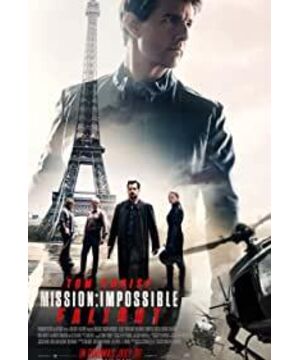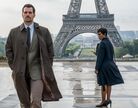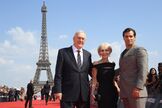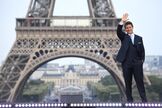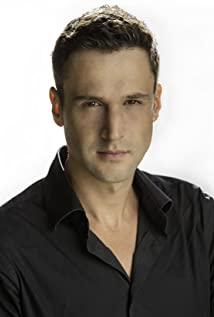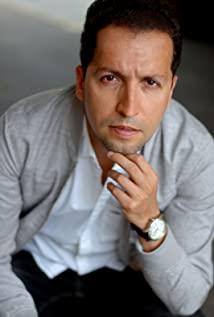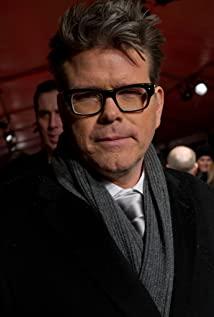The series of adventures arising from "Disc 6" are my best memories last year. The article itself was written by me as a fan for the entire "Mission Impossible" series. No. The public number push has been slightly changed, here is the original text.
This is an era in which the spy type survives for a while, and the spy element prevails. More and more "Female Spy" and "My Spy Ex-Boyfriend" are emerging in the movie market. They have emptied the political and historical dimension of traditional spy films in the laughter and curse, and also eliminated the symbol of spy character itself. The complex meaning of. At the same time, "007" and "Mission Impossible", two series of movies that have come from the heyday of spy films, are trying to regain their glory with spectacle action scenes and high-tech weapons.
Since the First World War, spy films have moved forward in the midst of repeated construction and reconstruction. There has never been a second type of film in the history of film that can be like spy films and follow the reality of our lives. It may be facing a completely new change today, as it was 30 years ago.
In 1989, the aftershocks of the fall of the Berlin Wall took away the aura of spy movies. The Cold War, which lasted for more than forty years, was full of turbulence and undercurrents, and the enemy and ours were clearly divided. This created the golden age of spy films. The end of the Cold War meant that the US-Soviet contradiction as the primary narrative power no longer existed. Spy films Recessed the enthusiasm in the loss of the old order.
The old order collapsed, and the new order has not yet been established. For spy films, this means looking for a new narrative mode. The 007 series of films that once captured the big screen in the 60s and 70s were inevitably stagnated. Until the mid-1990s, Brian de Palma's "Mission Impossible" was launched with a bold "father killing". The revival of spy films.
Tom Cruise mentioned his love of the original TV series "Mission Impossible" more than once, but the "Mission Impossible" movie he created is a comprehensive "Missing and Standing". This TV series broadcast in the 1960s and 1970s follows the classic Cold War narrative model: the fictional enemy of the Impossible Task Force, the "Eastern European Republic", obviously points to the Soviet Union in reality. However, in 1996, the core of the movie "Mission Impossible" became the contradiction between superior and inferior, the country and the individual, "father" and "son".
Roger Ebert, the most powerful film critic in the United States, once compared "Mission Impossible" to "a post-Cold War labyrinth that is difficult to penetrate," a labyrinth composed of confusing midgames and multiple plot reversals. After the ultimate mystery was revealed, the so-called "foreign spy agency" turned out to be just a blindfold, and Ethan Hunt's real enemy turned out to be his once highly respected boss, Jim.
The moment Ethan personally killed Jim, it actually announced that the rigid patriarchal order in the Cold War spy film had collapsed. The agents were no longer instrumentalized individuals crushed by the state apparatus. They were about to regain their identity and identity. Free will. Years later, this narrative of father killing is still reproduced in "The Bourne Shadows" and "007: Murder in the Sky".
So starting from the second part, Ethan Hunt's human side has been more demonstrated. He can actively choose tasks and teammates. The pursuit of love is his way of seeking self-identification outside of his agent status. The third part is undoubtedly the most romantic. The appearance of Julia made Ethan choose the latter between national ethics and personal ethics—this is also the closest he has been to death.
A "human" agent, is this what Tom Cruise wants? Obviously not, he has a much crazier desire: to make Ethan Hunt a "superman", a mortal body, scarred, but more fearless than any superhero.
In "Mission: Impossible 3", we can also see an Ethan who is suffering from gains and losses. He has the love and hatred, fear and sadness of ordinary people. The death of his lover caused him to lose control of his emotions for a time, and he avenged him by strapping the villain played by Philip Seymour Hoffman to a chair and hanging him outside the plane to torture him. When he fell into the hands of the enemy and saw his "wife" get shot through the head, Ah Tang made a heartbreaking performance. For this ordinary person, Ethan, "If I lose her, I won't be able to live anymore."
However, starting from "Mission Impossible 4: Ghost Protocol", the pain that we can empathize with has disappeared, and Ethan has become a selfless person who minimizes his personal desires. This film chose an emotionally tragic ending: The Impossible Task Team sat on the street at night and talked happily like ordinary people. Not long ago, they once again saved the world and saved the city from disaster. , The team members left one after another, and in the end only Ethan was left alone. At this time, he saw Julia in the crowd from a distance. She had already lived an ordinary life. The two of them were separated from the lively street, silently staring. Tenderness and goodbye.
Ethan Hunt’s heroism and tragedy lies precisely in his "sacrifice" is autonomous rather than forced. If "Disc 1" completes the transformation from tool to human, then "Disc 4" is complete The transition from human to "superman". In "Mission Impossible 5: Mysterious Nation", Ethan has become an unprecedented "world agent": to the CIA, he is a disobedient defector. He is investigating the Syndicate's conspiracy on his own. Take orders from any organization or individual.
This is a brand new and upgraded version of Ethan Hunt. On the front is the "Superman" who has survived all battles and transcends barriers, and on the back is the zeroization of individuals. There is no longer a family or even a motherland.
Correspondingly, starting from the fourth part, the love element that is usually necessary for genre movies has almost withdrawn. Except for Julia, who played by Michel Monaghan, the female characters in the "Mission Impossible" series are all highly typified characters: the first category is such as Emmanuel Bea and Léa Seydoux Such femme fatales, the second category is the hit girls such as Tandy Newton, Li Meiqi, Paula Barton, and the newly added Ilsa (Rebecca Ferguson) in the fifth part is a mixture of the two types. , She is more like a mirror image of Ethan, a close comrade in arms. Director Christopher McQueen deleted the kiss scene between the two, which also proves that the addition of this role is actually an anti-type attempt.
On the contrary, the action thrilling elements have been emphasized intensified. Those complex real-life stunts that are infinitely approaching the limits of humans have created an immersive movie spectacle, and even the story itself is no longer important. It is difficult for us to imagine how the next "Mission Impossible" can break through itself. Perhaps it is really like Simon Page said: "We have to go to space."
Compared with James Bond and Jason Byrne, Ethan Hunt’s character personality is relatively weak. In its heyday, the 007 series released a new work every year and a half on average, which lasted for more than 20 years. In the "Mission Impossible" series, only 6 movies were produced in a 22-year time span. The shortest interval between the fifth and sixth movies was also 3 years, and the second and third movies were as long as 6 Years.
According to statistics, the total number of films released in North America reached 724 in 2017, double the number in 2000. Under this industry ecology, the low-yield style of the Mission Impossible series can easily break the audience’s identification with the role: Ethan in each sequel is like a “new” role. As ordinary audiences, we are I agree with Ethan in this movie, but it is difficult to construct a relatively complete character arc of the entire series.
This sense of loss on the screen is made up for outside the screen.
Counting from "Endless Love" in 1981, Tom Cruise has been active on the big screen for 37 years, performing 46 roles, and Ethan Hunt is one of the most special. "Mission Impossible" walked through his young and middle-aged with Ah Tang, and witnessed the ups and downs of his career as an actor.
In the past ten years, apart from "Mission: Impossible", the most familiar works of Ah Tang are "World War", "Dangerous Spy", "The Hero Detective Jack", "Forsaken Battlefield", " "Edge of Tomorrow", "New Mummy"... Under the choice of Tom himself, his team, the church, and the media, he has been stereotyped as an "action superstar", a tough guy who is omnipotent and omnipotent. This kind of star image and cultural consumption field has made the audience unknowingly stitched together the characters of Atang, including Ethan Hunt, and Atang himself, in every "Mission: Impossible" movie. The gap is Tom and his many homogenous movie roles, feeding back the audience's perception of Ethan.
Furthermore, Ethan Hunt has already become the mirror image of the symbiosis with Tom. "Mission Impossible 4" is not only the demarcation point of the series of movies, but also a turning point in Tang's career. When Ethan Hunt changed from human to "Superman", Tom Cruise also experienced a similar transformation.
This starts with "Mission Impossible 3". In 2006, the six-year silent "Mission Impossible" finally ushered in a new work, but it created a series of low box office: the cost of 150 million US dollars was 25 million higher than the second one, and the final global box office was only 397 million, a decline from the previous game. 160 million, far below Paramount's expectations, and even the profit line failed to reach.
A month after the movie was released, Paramount suddenly announced the end of the 14-year partnership with Tom Cruise-the film company will sweep out the first-line superstars, which is also rare in film history. The business failure is undoubtedly the direct cause of the termination, although it can be seen from the response from Paramount that they put the blame on Tom Cruise personally.
Summer Redstone, the then chairman of Viacom (the fourth largest media group in the world and the parent company of Paramount Pictures), publicly stated: "We think people who will commit a'creative suicide behavior' and cause loss of company revenue should not continue to stay. Next, his recent actions are unacceptable to Paramount."
What is truly "unacceptable" for Paramount is the $10 million production fee that Tom’s Cruise/Wagner company takes away from Paramount every year and Tom’s high remuneration and box office share. Having said that, the "creative suicide behavior" mentioned by Redstone did damage the public image of Atang. It refers to two highly controversial interviews with Tang in 2005.
The "jumping on the sofa" on the "Oprah Show" can be understood as a program effect. Tang's speech on the "Tonight Show" really disappointed the public. He publicly criticized the actress Brooke Shields for taking antidepressant treatment. For postpartum depression, he also utterly said to the host: "You don't understand psychiatry, I understand... it is pseudoscience."
Why would a Hollywood superstar attack psychiatry in such a targeted manner? The answer is three words: Scientology. Scientology believes that mental pain is caused by something called "imprints", which can only be removed through their "auditing" therapy. (The so-called "listening" is similar to the confession of Christian confession combined with psychological counseling.) Therefore, Scientology opposes all mental illness medications. In 2004, Atang publicly mentioned that "psychiatry should be defined as illegal."
As early as 1986, Tom joined Scientology through his first wife Mimi Rogers. Throughout the 1990s, this controversial "religious belief" did not affect his stardom. Thanks to the professional team, on the other hand, it is also related to the second wife Nicole Kidman. During the ten years with her, Tom and the church have gradually moved away. However, with the intervention of the church, the two ended their marriage in 2001. Three years later, Tom replaced the public relations team that had worked together for many years, and instead hired his sister Lee Anne, a Scientologist who had no public relations experience. DeVette, this series of wrong choices finally led to the above-mentioned "suicidal behaviors".
But from another point of view, the contract termination incident has turned out to be Ah Tang’s first career turning point in the new millennium. He temporarily stayed away from major productions and instead took over "Lion Entering the Sheep's Mouth", "Tropical Thunder", and "Action". "Target Hitler" these relatively low-cost movies, and the first two are starring supporting roles. During this period of time, he apologized to Brooke Shields and finally hired a professional public relations team. Cruise/Wagner also found a new owner.
There is one more thing I have to mention: "Aiming Hitler" allowed Tom to meet Christopher McQueen, and they began a ten-year collaboration between the two and up to six films (including "Disc 5" and "Disc 6" ), McQueen will also participate in "Top Ambition: Maverick" and will have his Mission Impossible Quad (5-8). This kind of close and strong partnership also further guarantees Ah Tang's dominance over the "Mission Impossible" series.
In 2010, Tom Cruise, who gradually returned to the wind critics after converging his edge, found JJ Abrams, who had directed "Disc 3" and "Star Trek" for Paramount, but was unsatisfactory. Ramon negotiated to put the "Mission Impossible" series on the agenda again. This time, Paramount made a request: to add fresh blood, namely Jeremy Renner, who was in the limelight for the Oscar nomination at the time. It is not difficult to see that Paramount intends to train the new role into the next Ethan Hunt, to contain Tom Cruise's power.
Five years after "Disc 3" Waterloo, the double-acclaimed "Mission Impossible 4: Phantom Agreement" finally re-proved the commercial value of Tom Cruise and the huge potential of this series, nearly 700 million US dollars. The box office ranks second in the series so far, and the film's evaluation is second only to the recently released "Mission Impossible 6: Total Disintegration".
Paramount's "wishful thinking" has failed. No one can weaken Tom Cruise. From beginning to end, it was his war with himself.
When it comes to "Mission: Impossible", its prefix will always be "Tom Cruise's movie", not JJ Abrams' movies, Christopher McQueen's movies, or Paramount's movies. It is not only because of Tom's superstar status, but more importantly, his overall control of the entire series of movies as a producer and lead actor.
When Tom Cruise jumped out of the 828-meter-high Burj Khalifa in Dubai, he had already made the same choice as Ethan Hunt. This is a "superman" road, so far, Tom Cruise has been on this road for almost ten years.
He has turned himself into an all-rounder, a workaholic (even occasionally a control freak), and an out-and-out perfectionist. He is unwilling to just do front work, he wants more power. He has to participate in every detail of the script creation, shooting, props, scenes, editing, and later stages of the "Mission Impossible" series. He originally planned to take a plane scene and filmed it 8 times under his suggestion, in order to present it. For the perfect long shot of HALO skydiving, he tried 106 times.
As Tang said, because all the scenes are real shots, to some extent watching the "Mission Impossible" series is the same as watching a movie. He is an "audience-oriented" filmmaker. The reason he insists on real-life shooting is because he believes that audiences can see the falsity of computer special effects, and what he wants to create is an immersive and realistic experience. In addition, he is also a film fundamentalist, "unless there is no more film or no one can print it", just for the authentic texture that digital photography cannot replace.
Regarding the actual shooting and special effects, Clint Eastwood once told Roger Ebert an interesting personal experience: When shooting "Courage to Thunder Peak", there was a scene that had to be suspended several kilometers. On the high mountain, he insisted on going on stage in person and wanted to use a telephoto lens to present this scene. After the film was released, he disguised and sneaked into the theater to observe the audience’s reaction. When he saw this scene, someone exclaimed: "How did they shoot it? Come out?" Companion replied: "Special effects."
In the era of accelerated upgrade of special effects technology, the "authenticity" of movies no longer refers to the reality of the Lumiere brothers. For ordinary viewers, can the difference between real shots and special effects really be distinguished at a glance? Tang's "stubbornness" is actually a dilemma for the glory of film in the "post-film" era.
Superheroes are everywhere. Why do we need "Superman" like Tom and Ethan Hunt? The answer can be very simple: as long as "old school" filmmakers like Tang are still active in this industry, we have reason to believe that movies have not really died yet.
View more about Mission: Impossible - Fallout reviews


